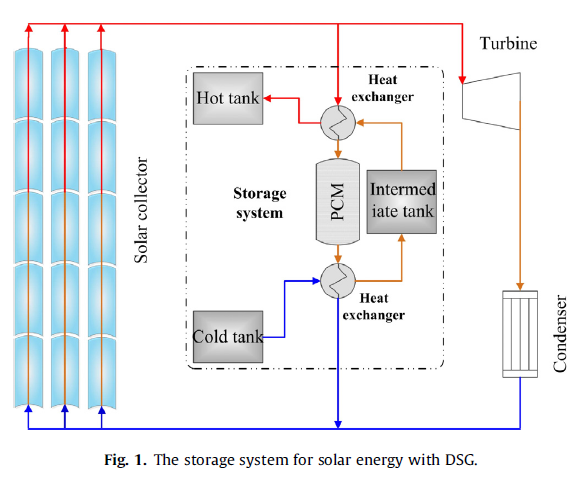A three-tank latent heat storage system in which liquid lead–bismuth eutectic alloy (LBE) is used as sen-sible heat storage medium, and sodium nitrate is selected as the phase change material (PCM), is proposed in the present work. The performance of thermal storage system depends chiefly upon the heat transfer performance at superheated steam stage, and the mass flow rate of LBE can be adjustable to accommodate the specific heat change of water/steam. There exists an optimal mass flow rate ratio to maximize the performance of storage system. Generally, the more uniform the temperature difference distribution is, the higher the thermal performance of the storage system. The optimal mass flow rate of liquid LBE appears under constant mass flow rate ratio condition, in which the entransy and exergy rises of steam reach the maximum. The increasing number of transfer units at superheated steam stage improves the thermal storage performance monotonously. The exergy efficiency of this storage system runs at more than 80% through proper parameters setting.
Conclusions
(1) A three-tank latent heat storage system is proposed for solar energy with DSG in the present work, liquid LBE and sodium nitrate are selected as the sensible and latent heat storage mediums. The mass flow rate of liquid LBE can be adjusted according to the specific heat change of water/steam thanks to the intermediate tank in the storage system.
(2) Generally, the more uniform the temperature difference distribution in the storage system is, the better the heat storage performance is.
(3) The heat load of high temperature heat exchanger decreases with decreasing mass flow rate ratio; while the heat exchanged between superheated steam and sodium nitrate increases.
(4) The heat released by superheated steam in charging process occupies about 35% of the total heat obtained by water/steam in solar collector field, while the heat received by superheated steam occupies only about 20% of total heat received by water/steam in discharging process. To improve the heat transfer performance at superheated steam stage directly decides the performance of storage system.
(5) There exists an optimal mass flow rate of liquid LBE to maximize the heat transfer performance at steam stage in discharging process, in which the thermal performance of storage system reaches the maximum.
The results have been published on International Journal of Heat and Mass Transfer 97 (2016) 191–200.
